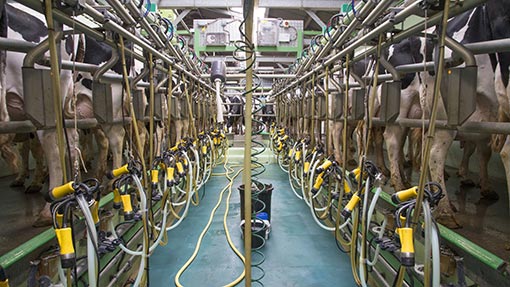February milk production hits record high

The UK’s milk production in February was the highest in more than 20 years.
British dairy farms produced 1,090m litres of milk, 112m more than in the same month last year and better than any year since the RPA started collecting the figures in 1994-95.
This year’s production, with one month left, is 12.4bn litres, so the UK seems likely to fall short of its 15.3bn-litre quota, even after adjusting for butterfat.
Butterfat stayed at 4.07% in February and the year’s average now stands 0.04% above the UK’s base of 3.97%.
Dr Dave Roberts, head of dairy research at Scotland’s Rural College, said many farmers were reacting to the strong milk price by increasing production.
“All things being equal and with an average turnout, we should be going into the next few months at quite a high level of milk production,” he said.
“Things that could change it would be a later-than-normal turnout, a sudden cold spell or a change in the milk price.
See also: UK’s milk production at 18-year high
“There is confidence, but it is pretty fragile, so it could take a knock if milk prices come back.”
EU production surged to 11.2bn litres in December, 4.4% up on the difficult previous year and 2.2% higher than the more normal year before.
Before quotas expire in 2015, several northern European countries, including Germany, Netherlands, Denmark and Ireland, are pushing their limits and could be hit by super-levy fines.
The Dairy Group managing director Ian Powell said the UK was unlikely to hit quota next year, but farmers should still be planning for 2015.
“As we head towards the end of autumn 2014, are we going to be getting closer? Will some brakes have to be applied? It looks unlikely, but you can’t be absolutely sure,” he said.
“To base a business plan on a certain milk price while knowing that quotas are going in April 2015 may be taking a risk with your business,” he said.
“With formula prices coming down and cost trackers under pressure, any business needs to plan carefully going forward.
“Probably the most critical factor is looking at cost of production. Anybody running cost of production in excess of 30p/litre needs to look carefully at their plans.”
